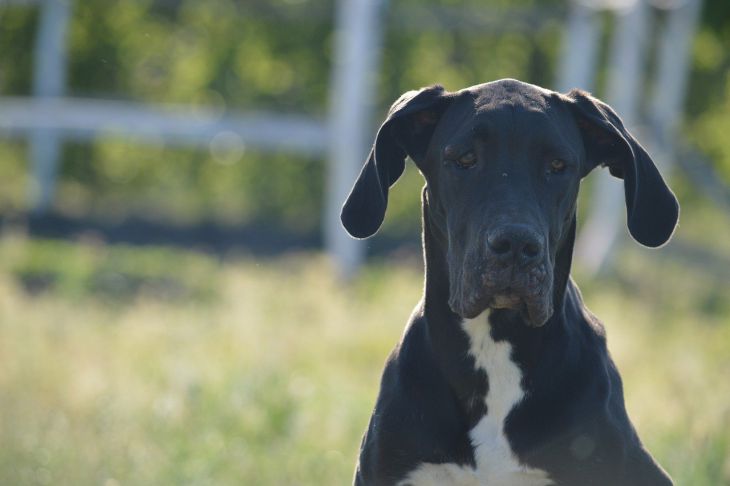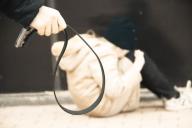The Great Dane is most often considered dangerous to keep as a pet.
To understand whether it is worth getting this breed, you should look at the characteristics of the animal.
Description
The Great Dane is a giant breed. Its height is 80-90 cm, and its weight is 50-70 kg. Males have a more powerful build due to their massive skeleton. The body of females is more elongated.

The Great Dane has hanging ears from birth. Previously, docking was necessary for hunting. Now this procedure is done for beauty.
The Great Dane's coat is very short, which makes grooming much easier. The breed comes in a variety of colors. The coat can be light gold, brindle, marble, blue or black.
Despite its impressive size, this breed has a calm and friendly disposition.
The Great Dane never barks without reason. The dog will only show aggression if its life or the life of its owners is threatened.
It's hard to believe, but such a seemingly dangerous pet can be left even with children. The dog belongs to the nanny breeds.
With proper training, the Great Dane will not only be a guard, but also a reliable assistant in many matters.
The dog is very sociable. The pet's favorite activity will be spending time with the family.
Loneliness does not have the best effect on him. Therefore, people who are away from home for a long time should not get a representative of this breed.
Care
To make your pet feel comfortable, it is important to create suitable conditions for him.
Place of detention
Despite its calm nature and low mobility, this breed is not recommended for keeping in an apartment.
Walking up and down stairs every day will accelerate the aging of the joints. The animal needs a spacious house with a fenced area.
It is not advisable to arrange a place outside. A long stay outside the house can lead to illnesses. Since this breed has a thin undercoat.
A cage is also not the best solution. Being cut off from the family will lead to mental disorders. The Great Dane may go berserk or become depressed.
Wool
Thanks to the short hair and moderate shedding, you can forget about long combing. For care, you will need a massage glove or a brush with soft bristles. The pet is combed once every 7 days. In the spring, the procedure is carried out 2-3 times a week.
Bathe the dog 1-2 times a month. Frequent bathing will lead to thinning of the natural fatty film, which will have a detrimental effect on the animal's immunity. It is advisable to use only a special shampoo purchased at a veterinary pharmacy.
Nutrition
You can feed your Great Dane with high-quality Super Premium and Holistic food. If you prefer natural food, it is important to consider the following:
- only lean meat is allowed (chicken, rabbit, beef);
- 600-800g of meat per day is required;
- the diet should include cereals and vegetables;
- Feeding sweets, baked goods, pork, smoked foods, and table scraps is prohibited.
It is important to remember that walking after eating can lead to volvulus. You should walk your dog half an hour after eating.
Training
A dog's friendliness depends on its upbringing. Using harsh training methods does not contribute to the development of a peaceful nature.
A dog raised in fear will try to harm its owner. After all, it will perceive the person as an aggressor.
It is better to start training at the age of 2-3 months. During this period, the puppy will quickly learn commands in a playful manner. It is worth remembering to reward your pet for following commands. At the same time, you should socialize your pet. This will help to avoid fights in the future.
Before getting a Great Dane, you should think carefully and evaluate your financial, physical and psychological capabilities.
Earlier we wrote about why cats lick their hair.









